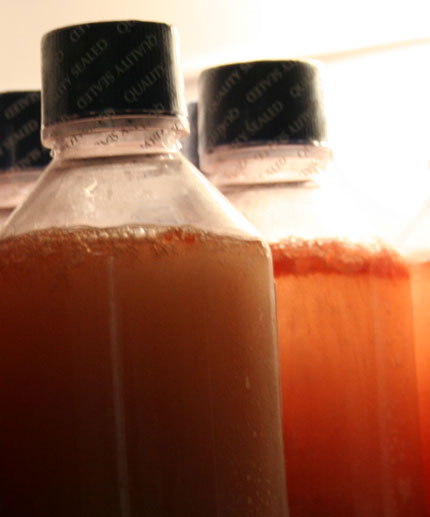Technical Tips

Technical Tips 1 – Heat Inactivation of Fetal Bovine Serum
May apply in part or in whole to other sera (please contact the TCF for details)
Two of the most commonly asked questions at the TCF are 1) “Do I need to heat inactivate my serum?” and 2) “How do I heat inactivate my serum?”. We find that most researchers who heat inactivate their serum do it simply because it is in a protocol they are using or it has been established for a long time as a standard practice in their laboratory. Many of the protocols or standards originated in the early days of cell culture, for probably valid reasons at the time, but have not been questioned recently. Improvements in collection, processing, and understanding of serum products have made some of those original reasons invalid. Let’s consider each of the questions above.
Early in cell culture, heat inactivation was considered necessary to destroy heat-labile complement proteins. Triglia and Linscott (1) determined that levels of complement components in commercial fetal bovine serum (FBS) were a fraction of adult levels and in 10 samples of commercial FBS, no hemolysis was detected even in undiluted serum. Also, pre-warming FBS to 37°C, as most labs do, is enough to inactivate heat-labile complement components. Serum used to be filtered through 0.45um or 0.22um filters. There was valid concern that adventitious agents such as mycoplasma could still be present after filtration. In such cases, heat inactivation could help to reduce the potential for obtaining contamination through this route. Today, serum is typically filtered through 0.1um or even 0.04um porosity membranes! This has essentially eliminated the need to heat inactivate serum due to the concern over contamination from serum. Although there are few published papers concerning heat inactivation of serum and its effect on cell culture systems, a report by Hyclone (2) and our own experience at the TCF suggests that in most cases heat inactivation is not required and is, in many cases, detrimental to the growth promoting capacity of serum. When one heat inactivates serum, not only is complement protein degraded, (which has been indicated above may not be necessary), but also all other components such as amino acids, vitamins, growth factors, etc. are subjected to temperatures that could cause degradation. In many cases, certain important components that are of borderline concentration may be reduced to concentrations less than that required by certain cell lines for growth.
If it is experimentally determined that heat inactivation is required, however, the most common procedure and the one recommended by the TCF is as follows:
- Thaw the serum slowly to 37°C and mix the contents of the bottle thoroughly.
- Place the thawed bottle of serum into a 56°C water bath containing enough water to immerse the bottle to just above the level of the serum.
- Begin timing for 30 minutes. Swirl the serum every 5 to 10 minutes to ensure uniform heating and to prevent protein coagulation at the bottom of the bottle.
- After 30 minutes at 56°C cool the serum immediately, preferrably in an ice bath.
Notes: Heating the serum for longer than 30 minutes or higher than 56°C will have an adverse effect on the efficacy of the serum and will most likely cause an increase in the amount of cryo-precipitate that might form. For volumes less than 500 ml of serum to be heat inactivated, reduce the time of incubation in the 56°C water bath.
In summary, there may be few reasons to heat inactivate serum. Those reasons should be experimentally determined and documented. In most cases heat inactivation does not improve growth promotion and may actually have adverse effects. Also, heat inactivation can cause an increase in the formation of precipitates that are often mistaken as microbial contamination. If heat inactivation is necessary, strictly follow a repeatable procedure. Consistency in the way serum is thawed, handled, and stored can play a significant role in consistency of cell growth and repeatability in experimentation. References
- Triglia, R.P., Linscott, W.D. 1980. Titers of nine complement components, conglutinin and C3b inactivator in adult and fetal bovine sera. Molecular Immunology. 17:741-748.
- Hyclone Labs 1996. Art to Science. Vol. 15, No. 1: 1-5.
